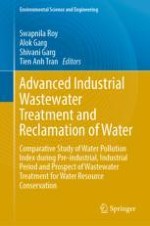2022 | OriginalPaper | Buchkapitel
3. Advances & Trends in Advance Oxidation Processes and Their Applications
verfasst von : Pratibha Gautam, Amishi Popat, Snehal Lokhandwala
Erschienen in: Advanced Industrial Wastewater Treatment and Reclamation of Water
Aktivieren Sie unsere intelligente Suche, um passende Fachinhalte oder Patente zu finden.
Wählen Sie Textabschnitte aus um mit Künstlicher Intelligenz passenden Patente zu finden. powered by
Markieren Sie Textabschnitte, um KI-gestützt weitere passende Inhalte zu finden. powered by
